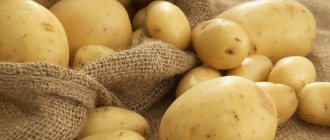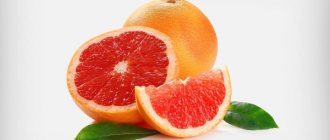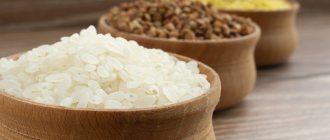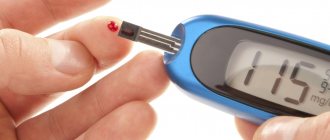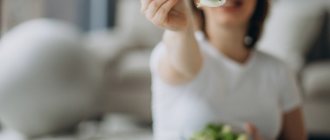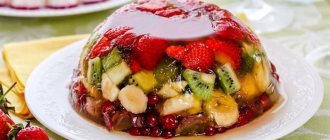Excess weight not only spoils a person’s figure, but is also the cause of many serious diseases. For example, already in a state of pre-obesity, a person’s sensitivity to insulin may decrease. This is called insulin resistance. Cells stop responding properly to the effects of insulin, which blocks the process of assimilation of glucose that enters the bloodstream when consuming carbohydrates. As a result, the pancreas, in order to improve the efficiency of the process of breakdown and absorption of glucose, increases the production of insulin. Over time, the body needs more and more insulin to function normally. When the need for it becomes too high and the body can no longer provide itself with the required amount, diabetes develops.
If you have insulin resistance, diabetes, or high insulin levels, it is important to lose weight. In the first case, this will help avoid the development of diabetes, and in the second, it will alleviate the general condition and improve the quality of life. Weight loss is a rather complex process that requires the support of specialists. For people with serious health problems such as type 2 diabetes, it is simply not safe to lose weight on their own. It is imperative to consult with experienced nutritionists, rehabilitation specialists, and psychologists, who should develop an individual comprehensive weight loss program. Only in this case can you count on a good result without risking further harm to your health. The Doctor Bormental clinic uses its own patented method of losing weight and maintaining results, with the help of which more than half a million people have already lost weight. Read more about the methodology here -.
General rules
There are certain rules, following which you can develop a high-quality convenient menu.
- The diet should contain mainly foods with low calorie content and a minimal glycemic index.
- You should first consult your doctor regarding fasting days. If doctors allow it, you can eat exclusively light, non-calorie foods once a week, reducing your daily caloric intake.
- You should avoid snacking and eat only properly prepared whole foods.
- Avoid fried foods.
- Avoid carbonated sweet drinks and replace them with clean water.
- Reduce salt intake.
- Calculate the menu so that the daily amount of calories consumed corresponds to the energy expended.
- Animal products should make up no more than a third of the total diet.
- Calculate the required amount of protein and introduce protein-containing foods in the required quantity.
- Eat at least 5 times a day in small portions.
- Schedule meals according to time, adhere to the established regime every day.
List of approved products
The diet of a person with insulin resistance or diabetes should consist of natural foods rich in proteins and vitamins. In this case, complex carbohydrates must be present in sufficient quantities. Nutritionists recommend consuming the following foods:
- buckwheat;
- fresh fruits except bananas, cherries and grapes;
- dried fruits;
- oatmeal;
- unprocessed rice;
- pumpkin;
- garlic;
- onion;
- mushrooms;
- kefir;
- fermented baked milk;
- yogurt;
- eggplant;
- radish;
- carrot;
- beet;
- potatoes (300 g per day)
- celery;
- cucumbers;
- pepper;
- salad;
- cabbage;
- beans;
- peas;
- cereal flakes.
To replenish protein you need:
- legumes;
- nuts;
- hard cheese;
- cottage cheese;
- eggs;
- chicken;
- beef;
- seafood;
- lean fish.
You can add a little butter, but you should give preference to fats of vegetable origin - corn oil, sesame oil, olive oil.
It is very important to provide the body with microelements necessary for proper metabolism. These substances increase sensitivity to insulin. These include: manganese, magnesium, chromium, zinc, copper.
Authorized Products
- The basis of the diet should be vegetables: various varieties of cabbage, lettuce, cucumbers, spinach, eggplant, garlic, turnips, bell peppers, raw carrots, squash, radishes, mushrooms, radishes and others with a low glycemic index. In general, their consumption should be increased to 600 g per day in raw form (this is how all vitamins and minerals are preserved). For the most part, you need to eat green vegetables and leafy salads, rich in lutein and indoles , which have antioxidant properties. To improve the taste, you can add sesame seeds, lemon juice, flax seeds and chia seeds, nuts and season with various vegetable oils to improve the taste. Sea kale (a source of iodine, fiber and vitamins) is a low-calorie product and can be added to any salads. For variety, you can eat vegetables stewed and baked. Potatoes are excluded or allowed in limited quantities and rarely.
- Legumes are also an integral part of the diet as they are sources of protein, fiber, some minerals and omega-3 fatty acids . You can eat lentils, beans, peas, green peas, and green beans. Several times a week you can allow small portions of legumes in combination with other vegetables.
- Lean meat (beef, veal) and poultry (chicken, turkey without skin). These products are boiled, baked or steamed.
- Low-fat fish (pollock, pike perch, blue whiting, cod, pike, navaga, hake, carp, notothenia). Fatty fish, which are also recommended to be consumed, are high in omega-3 and omega-6 . Fish is rich in phosphorus, magnesium, potassium, fat-soluble vitamins, and protein is easier to digest, so you need to include it in your diet more often than meat. The cooking methods are the same as for meat.
- Rye bread, whole grain bread, bran bread and whole grain bread. Take 1-2 pieces per day, but it is better in the first half of the day.
- The amount of cereals in the diet is limited. Once or twice a week you can eat a serving of wild rice, buckwheat and oatmeal. Millet, pearl barley, and semolina are excluded due to their high GI.
- Unsweetened berries are best eaten fresh, but they can also be eaten in compotes or mousses. Among fruits, you should give preference to citrus fruits, avocados, cherries, cranberries, plums, apples, gooseberries, wild strawberries, lingonberries, raspberries, and strawberries.
- Vegetable oils added to prepared dishes. Of particular value are walnut, sea buckthorn, cedar, olive, pumpkin, avocado, corn, flaxseed, and sesame oils due to the correct ratio of omega-3 and omega-6 . It should be noted that vegetable oils should be consumed only in their natural form and no more than 2 tablespoons. l per day.
- First courses cooked in water, vegetable broth or weak meat broth. These should be predominantly vegetable/mushroom soups, due to their low calorie content. Potatoes are not added to soups or are present in small quantities.
- Low-fat fermented milk drinks, milk and not very fat cottage cheese, feta cheese and cheese with 30% fat content. Sour cream should be used with the least fat content and only as an additive to dishes (1-2 tbsp).
- Soft-boiled eggs, omelet with mushrooms and vegetables (better done steamed or in a dry frying pan).
- You can eat up to 1 tsp of honey. in a day.
- Any nuts 30-40 g per day in their natural form (not fried or salted) are sources of beneficial alpha-linolenic acid and essential fiber, magnesium, zinc, iodine, iron and cobalt. Don't forget about the high calorie content of all nuts.
- Among drinks, preference should be given to vegetable and fruit juices, herbal teas, coffee with milk, but without sugar, green tea with lemon and ginger, and rosehip decoction.
Table of permitted products
| Proteins, g | Fats, g | Carbohydrates, g | Calories, kcal | |
Vegetables and greens | ||||
| zucchini | 0,6 | 0,3 | 4,6 | 24 |
| Brussels sprouts | 4,8 | 0,0 | 8,0 | 43 |
| sauerkraut | 1,8 | 0,1 | 4,4 | 19 |
| cauliflower | 2,5 | 0,3 | 5,4 | 30 |
| cucumbers | 0,8 | 0,1 | 2,8 | 15 |
| radish | 1,2 | 0,1 | 3,4 | 19 |
| tomatoes | 0,6 | 0,2 | 4,2 | 20 |
Fruits | ||||
| cherry | 0,8 | 0,5 | 11,3 | 52 |
| pears | 0,4 | 0,3 | 10,9 | 42 |
| plums | 0,8 | 0,3 | 9,6 | 42 |
| apples | 0,4 | 0,4 | 9,8 | 47 |
Berries | ||||
| cowberry | 0,7 | 0,5 | 9,6 | 43 |
| blackberry | 2,0 | 0,0 | 6,4 | 31 |
| raspberries | 0,8 | 0,5 | 8,3 | 46 |
| currant | 1,0 | 0,4 | 7,5 | 43 |
Nuts and dried fruits | ||||
| nuts | 15,0 | 40,0 | 20,0 | 500 |
Cereals and porridges | ||||
| buckwheat (kernel) | 12,6 | 3,3 | 62,1 | 313 |
| oat groats | 12,3 | 6,1 | 59,5 | 342 |
| boiled wild rice | 4,0 | 0,3 | 21,1 | 100 |
| barley grits | 10,4 | 1,3 | 66,3 | 324 |
Bakery products | ||||
| Rye bread | 6,6 | 1,2 | 34,2 | 165 |
| bran bread | 7,5 | 1,3 | 45,2 | 227 |
| whole grain bread | 10,1 | 2,3 | 57,1 | 295 |
Dairy | ||||
| milk | 3,2 | 3,6 | 4,8 | 64 |
| kefir | 3,4 | 2,0 | 4,7 | 51 |
| sour cream 15% (low fat) | 2,6 | 15,0 | 3,0 | 158 |
| curdled milk | 2,9 | 2,5 | 4,1 | 53 |
| acidophilus | 2,8 | 3,2 | 3,8 | 57 |
| yogurt | 4,3 | 2,0 | 6,2 | 60 |
Cheeses and cottage cheese | ||||
| cottage cheese | 17,2 | 5,0 | 1,8 | 121 |
| cottage cheese 0.3% | 18,0 | 0,3 | 3,3 | 90 |
Meat products | ||||
| beef | 18,9 | 19,4 | 0,0 | 187 |
| beef tongue | 13,6 | 12,1 | 0,0 | 163 |
| veal | 19,7 | 1,2 | 0,0 | 90 |
| rabbit | 21,0 | 8,0 | 0,0 | 156 |
Bird | ||||
| chicken | 16,0 | 14,0 | 0,0 | 190 |
| turkey | 19,2 | 0,7 | 0,0 | 84 |
Eggs | ||||
| chicken eggs | 12,7 | 10,9 | 0,7 | 157 |
Oils and fats | ||||
| corn oil | 0,0 | 99,9 | 0,0 | 899 |
| linseed oil | 0,0 | 99,8 | 0,0 | 898 |
| olive oil | 0,0 | 99,8 | 0,0 | 898 |
| sunflower oil | 0,0 | 99,9 | 0,0 | 899 |
Non-alcoholic drinks | ||||
| mineral water | 0,0 | 0,0 | 0,0 | — |
| black coffee | 0,2 | 0,0 | 0,3 | 2 |
| instant chicory | 0,1 | 0,0 | 2,8 | 11 |
| black tea without sugar | 0,1 | 0,0 | 0,0 | — |
Juices and compotes | ||||
| grapefruit juice | 0,9 | 0,2 | 6,5 | 30 |
| plum juice | 0,8 | 0,0 | 9,6 | 39 |
| tomato juice | 1,1 | 0,2 | 3,8 | 21 |
| rose hip juice | 0,1 | 0,0 | 17,6 | 70 |
| Apple juice | 0,4 | 0,4 | 9,8 | 42 |
| * data is per 100 g of product | ||||
What can you drink
Drinks containing sugar are prohibited for people with prediabetes. Therefore, store-bought juices and sweet waters should be excluded. You can drink large quantities of clean water, as well as self-prepared compotes, decoctions and sugar-free fruit drinks. Hot drinks allowed include coffee (1-2 cups per day) and green tea. They should also be drunk without sugar. But you can use natural sweeteners such as glycyrrhizin, fructose, stevia or regular honey. You should not use synthetic sweeteners, as they can be harmful to health and make you feel worse.
Not all permitted sweeteners can be used in unlimited quantities. The most harmless is glycyrrhizin. If you can’t drink unsweetened drinks and have to use a sweetener constantly, it’s better to use glycyrrhizin. Honey is very healthy, but can cause allergic reactions, and it is not suitable for a person losing weight. It can be consumed no more than 1 teaspoon per day. Fructose is an optimal sugar substitute, but you should not consume more than 25 g per day.
Treatment of insulin resistance
It is important to understand that at some points in life, insulin resistance is considered normal. This includes pregnancy, adolescence, and the cycle.
Such conditions, as a rule, do not require serious treatment; you just need to promptly adjust the dosage of glucose-lowering drugs and wait until the “hormonal storm” ends.
The rest of the treatment for IR consists of eliminating its cause. Excess weight should be reduced to normal with the help of a low-calorie diet and exercise; lack of sleep - eliminate; stress - try to minimize it; normalize insulin dosages, nutrition and regimen to reduce the frequency of hypoglycemia, etc.
In some cases, drug treatment may be needed. In this matter, the doctor’s competent individual approach to the patient is important.
Take care of yourself, Your DiaMarka!
List of prohibited products
Products that contain fats and fast carbohydrates, and at the same time do not have useful substances, are not recommended:
- fast food dishes;
- semolina, millet, pearl barley;
- pork, lard;
- pasta and semi-finished flour products;
- sweet carbonated drinks;
- store-bought seasoned snacks;
- fried and fatty foods.
If a person’s menu consists mainly of the items listed above, we can safely talk about an eating disorder. To correct the situation and not lead to diabetes, you should contact a nutritionist and adjust your diet. Experts recommend removing prohibited foods gradually, one item per week.
In cases where a person has a serious addiction to favorite but unhealthy foods, switching to a new balanced diet may be too difficult. Often it ends in a breakdown and refusal to change eating habits. To avoid this, it is recommended not to remove prohibited food altogether, but to reduce its consumption to a minimum. For example, some nutritionists advise once a week to conduct a fasting day in reverse - during the day you eat everything familiar and unhealthy, but on the remaining 6 days you do not touch such food at all.
“ABC” system – a reminder for patients with diabetes mellitus
A -
stands for A1C (glycosylated hemoglobin). This is a blood test that shows your average glucose levels over the past few months.
Target level –
below 7%, but ideally the level should be below 6.
IN
– this is blood pressure. If you have diabetes, controlling your blood pressure is just as important as your blood glucose. High blood pressure increases the risk of cardiovascular disease and kidney disease.
Target level
– below 130/85 mm Hg. Art. or even lower (determined individually by the attending physician).
WITH
- this is cholesterol. High cholesterol is another risk factor for serious heart and blood vessel problems.
Target level of “bad cholesterol” LDL
– below 1.8 mmol/l.
Diet menu for insulin resistance (Diet)
The diet of a person with insulin resistance should be varied and balanced. You need to include dishes that will bring pleasure and provide the body with all the necessary substances. Below is a sample menu for the week. It can be supplemented and modified depending on personal preferences, season, and capabilities.
Monday
Breakfast:
- tea or coffee (without sugar);
- 1 unsweetened fruit (orange, kiwi, green apple);
- omelette with low-fat milk (you can add vegetables or herbs).
2 breakfast:
- tea or unsweetened juice;
- tofu cheese (30 g);
- fruit salad with natural yogurt without additives.
Dinner:
- vegetable soup;
- steamed chicken (100 g);
- boiled brown rice (100 g);
- a glass of water or herbal tea.
Afternoon snack:
- cottage cheese with low-fat sour cream and dried apricots;
Dinner:
- pollock with vegetables, baked in the oven;
- juice or water.
2nd dinner:
- low-fat kefir (200 g).
Tuesday
Breakfast:
- a glass of fruit juice;
- oatmeal with water (100 g);
- seasonal berries (100 g).
2 breakfast:
- 1 orange or grapefruit.
Dinner:
- vegetable salad with herbs and olive oil;
- buckwheat porridge from unfried cereals (150 g);
- tomato juice or tea without sugar;
Afternoon snack:
- 2 green apples.
Dinner:
- steamed or oven-baked fish with seasonal vegetables;
- a glass of green tea or water.
2nd dinner:
- a glass of kefir.
Wednesday
Breakfast:
- tea or coffee without sugar;
- cottage cheese (100 g);
- dried apricots (50 g).
2 breakfast:
- 1 or 2 oranges.
Dinner:
- leafy vegetable salad dressed with olive oil;
- chicken broth with homemade noodles;
- brown rice (100 g)
- tea or juice.
Afternoon snack:
- seasonal berries or fruits (150 g).
Dinner:
- a fresh vegetable salad;
- steamed or oven-baked chicken (breast);
- 1 glass of tea or water.
2 dinner
- low-fat cottage cheese (50 g)
Thursday
Breakfast:
- fruit or vegetable salad;
- 2 egg omelette;
- bread (2 pcs.);
- A glass of tomato juice.
2 breakfast:
- nuts (50 g).
Dinner:
- seaweed salad (can be with vegetables);
- mushroom soup;
- boiled turkey (100 g);
- green tea or juice.
Afternoon snack:
- low-fat cottage cheese with berries or nuts.
Dinner:
- beef, cooked in the oven or steamed (100 g);
- vegetable salad.
2nd dinner:
- a glass of juice or kefir.
Friday
Breakfast:
- salad with soft cheese and vegetables;
- tea with milk without sugar.
2 breakfast:
- fruit salad with yogurt.
Dinner:
- lean borscht;
- vegetable salad seasoned with flaxseed oil;
- boiled beef (50 g);
- ginger tea.
Afternoon snack:
- 200 g of fruits or berries according to the season.
Dinner:
- vegetable stew;
- green tea or juice.
2nd dinner:
- a glass of kefir or yogurt.
Saturday
Breakfast:
- soft-boiled egg;
- tea or coffee.
2 breakfast:
- salad with vegetables and seaweed.
Dinner:
- boiled chicken or turkey breast (100 g);
- chickpeas stewed with vegetables;
- grapefruit or orange juice.
Afternoon snack:
- fruit salad (100 g).
Dinner:
- lentil juice;
- A glass of tomato juice.
2nd dinner:
- a glass of drinking yogurt.
Sunday
Breakfast:
- 1 egg omelette;
- Chinese cabbage salad;
- ginger tea.
2 breakfast:
- cottage cheese (100 g), you can add 50 g of dried apricots.
Dinner:
- buckwheat porridge;
- fish with vegetables in the oven;
- green tea.
Afternoon snack:
- fresh grapefruit.
Dinner:
- steamed fish cutlet;
- a fresh vegetable salad;
- a glass of juice or water.
2nd dinner:
- a glass of kefir or yogurt.
Every day, at any meal, you can eat 2 slices of rye bread. It is advisable that the bread is not fresh, but baked a day or two in advance. You can replace bread with diet bread.
It is very important to remember to maintain water balance during any diet. You need to drink small amounts of water frequently throughout the day. In general, you should drink about 2 liters of water per day.
The principles of such a diet
The doctor created a separate nutrition system in which those losing weight control the level of insulin in the body.
It's not as difficult as it seems. Our body produces this substance after eating various tasty treats - pure carbohydrates or carbohydrates with animal proteins (potatoes with meat, macaroni and cheese). Rising insulin prevents our body from fighting fats at night.
That is: we eat right, insulin does not jump, the body burns calories itself.
The fact is that while we sleep, our body not only rests. The flow of lymph is regulated in the body, each cell is cleansed of toxins and restored. For this she needs energy. If we “loaded” food into the body before going to bed, the body draws strength by digesting it. If not, it uses up carefully stored fat deposits.
But of course, not everything is so simple. The daily diet should be selected in such a way that the body does not put aside the calories that enter the body during the bright half of the day in exchange for the calories burned at night. Therefore, the method for losing weight recommends a separate menu, three times a day, that is: breakfast, lunch and dinner. No snacks.
Main rules
- The interval between meals is 5 hours.
- You can’t eat at night or overnight. Finish dinner at least 3 hours before bedtime.
- For dinner, eat dishes with a minimum amount of carbohydrates.
- During each meal, the body receives a maximum of 20 g of fat.
- Light physical activity will help speed up weight loss.
You need to eat according to the following scheme: for breakfast - carbohydrates, for lunch - dishes from combined products, for dinner - protein foods.
Advantages of this technique
The menu is accessible and inexpensive.
You don't have to count the calories of each dish.
If you have long been guilty of eating unhealthy foods and have gained excess weight (especially around the waist), you may have developed insulin resistance. No one knows about it until this condition turns into the next one - type 2 diabetes. But even if resistance has already “settled” in the body, an insulin diet will help delay the development of diabetes, or even prevent its occurrence.
There are three types of diets: express (in which the body loses and then quickly gains back water), exhausting (“eat up” muscles) and slow but competent (burn fat deposits). Insulin nutrition belongs to the third type of diet. Losing weight here is slow, not dangerous either for the genitourinary system or for the external condition of the skin (the dermis will not sag). The results are a loss of just over 2 kg per month.
Does she have any disadvantages?
- Not suitable for diabetics. The menu for the week includes potatoes, pasta, corn, muesli - everything that is forbidden to them.
- Since the menu is extensive and you cannot leave the table hungry, there is a risk of overeating. Choose a smaller plate!
- You cannot lose weight quickly using this method. If you need to lose weight urgently in order to fit into that red dress for a date or look sexy in a swimsuit on vacation, you should choose a different diet.
Pros and cons of the diet
A diet for people with insulin resistance is offered as an option for ongoing proper nutrition. Compared to short-term diets with more strict restrictions, it has the following advantages:
- Prolonged fasting is avoided, which can aggravate any chronic disease and cause various new health problems.
- Foods low in fat and carbohydrates contribute to overall health of the body.
- The digestive and cardiovascular systems are restored.
- The development of diabetes mellitus is prevented.
- The weight returns to normal quite quickly.
- It is allowed to use a fairly wide range of products, so that a person does not feel a strong desire to give up the diet.
The disadvantages of the diet include some difficulties that arise in the first stages of its use. These include the following phenomena:
- The first few weeks a person feels the urge to eat something from his previous “wrong” diet. To avoid a breakdown, you can leave some familiar dishes, reducing their consumption to a minimum. Over time, habits will be reformatted, and the craving for forbidden food will pass.
- The need to constantly monitor your diet. Before preparing a particular dish, you need to check all the ingredients with the calorie content and composition tables. This is also a temporary phenomenon. Very quickly a person determines for himself a basic set of dishes that consist of permitted products.
- A sharp restriction of fast carbohydrates can lead to stress and depression. To maintain a normal psycho-emotional state, you need to reduce fast carbohydrates gradually. Ultimately, leave the necessary minimum to maintain tone.
Mechanism and complications of insulin resistance
The content of the article
One of the mechanisms that accompanies excessive amounts of body fat and insufficient physical activity is the phenomenon of increased insulin secretion. This mechanism has a compensatory task: it prevents hyperglycemia, because adipose tissue, unlike muscle tissue, has hormonal and metabolic activity (in other words), promotes hyperglycemia.
However, over time, like any overloaded compensation mechanism, it gradually breaks down. Due to excess insulin, reactive hypoglycemia occurs, that is, a decrease in glucose levels several hours after eating.
When insulin sensitivity is reduced, prediabetic conditions (abnormal fasting glucose, abnormal glucose tolerance) appear, followed by type 2 diabetes. In the meantime, disorders associated with excess insulin, such as cardiovascular disease or skin pathologies, may appear.
Cardiovascular diseases
Skin pathologies
Insulin sensitivity is not only dependent on fat mass, but is also partly determined genetically, which carries a risk of diabetes and cardiovascular disease. It is also impaired in some diseases, the most common of which is polycystic ovary syndrome, which can lead to misdiagnosis.
How to replace sweets
For many people, the transition to proper nutrition is very difficult precisely because of the lack of sweets. Sugar-containing products, especially baked goods and confectionery products, which contain the same fast carbohydrates and fats, are excluded in any diet. But the body, accustomed to sweets, begins to “panic”. It gives a signal that nutrition has become inadequate, and the person experiences serious discomfort, his mood worsens, and a state of depression occurs. Therefore, those who previously consumed a lot of sweets, when switching to a diet, need to think about a healthy replacement for cakes, sweets and buns.
Fans of cottage cheese desserts can prepare casseroles from low-fat cottage cheese. You can add low-fat sour cream, berries, and nuts. If necessary, you can sweeten with fructose or stevia.
A good dietary option is carrot casserole with sour cream and whipped egg white. You can make all kinds of fruit salads and season them with low-fat natural yogurt without additives. The easiest way is to bake apples in the oven. You can have it with cottage cheese, dried fruits, and adding a drop of honey. There are other recipes for healthy sweets on the Internet. They are much better than store-bought confectionery, they do not make you fat, and they are not harmful to your health. You should remember this when you want to buy something sweet in a store.
For busy people who don’t have time to prepare their own desserts, supermarkets have special sections with products for customers with diabetes. These are various sweet products containing safe sweeteners. You can sometimes buy them, but you should not abuse them, since they contain other harmful ingredients - dyes, flavor enhancers, preservatives, etc. It is better to accustom yourself to natural fruits, dried fruits, nuts.
Causes of Insulin Resistance
A lot of them. ONLY a doctor can determine the exact cause. Do not engage in self-diagnosis and self-medication! The most common reasons: overweight, old age, sedentary lifestyle, hereditary factor.
If we talk about temporary insulin resistance, it can occur:
- during illness accompanied by fever
- during inflammatory processes in the body
- with chronic stress (prolonged increase in stress hormones reduces the sensitivity of cells to insulin)
- when taking certain medications (eg, steroidal anti-inflammatory drugs, hormones)
- for chronic hypoglycemia. This condition is also called “Somogyi syndrome”
- with prolonged lack of sleep (stress hormones are to blame, again)
- during hormonal “changes” (pregnancy, adolescence, second phase of the cycle, menopause, etc.)
